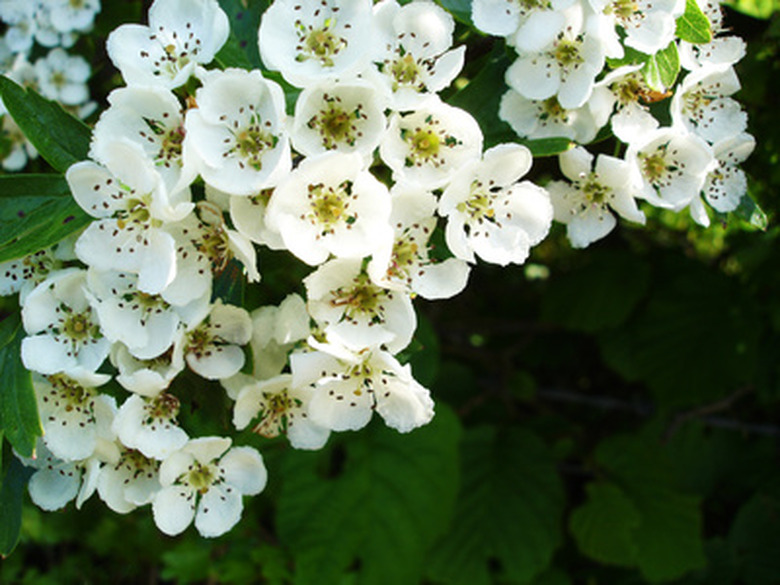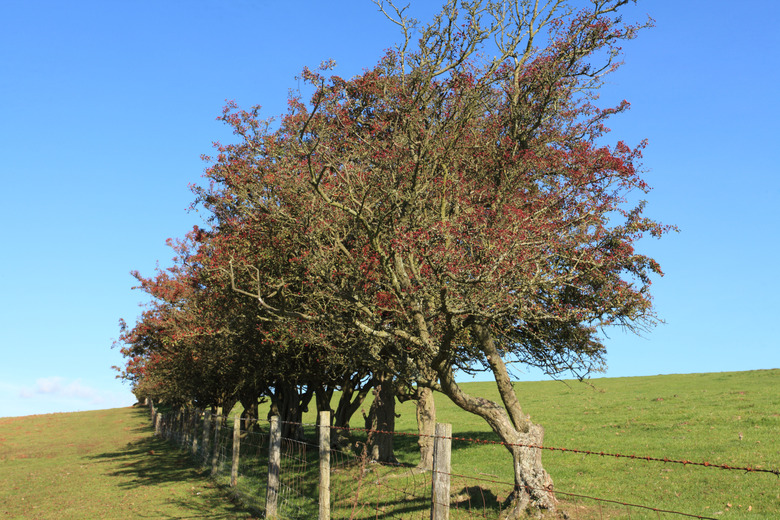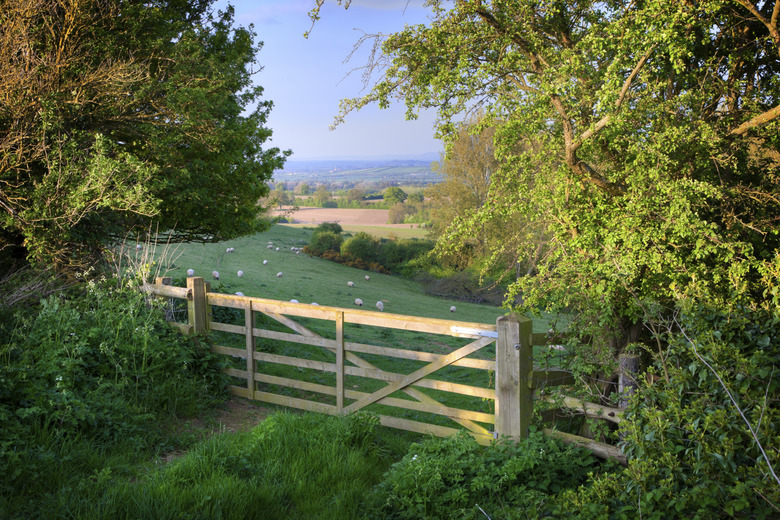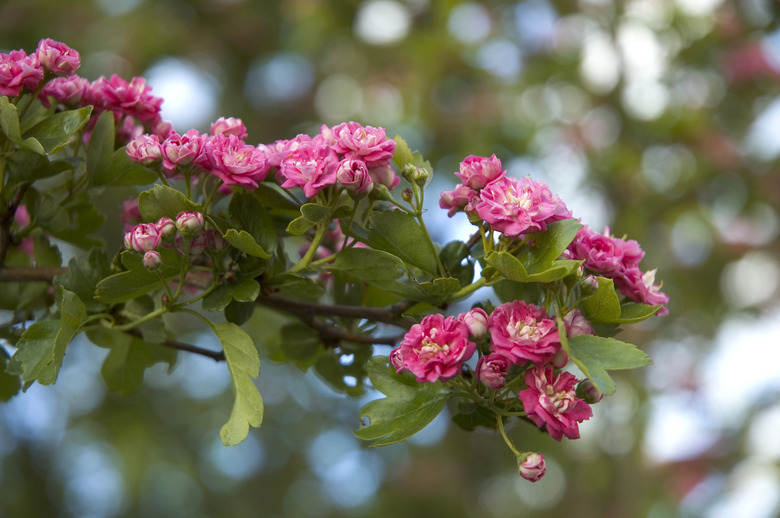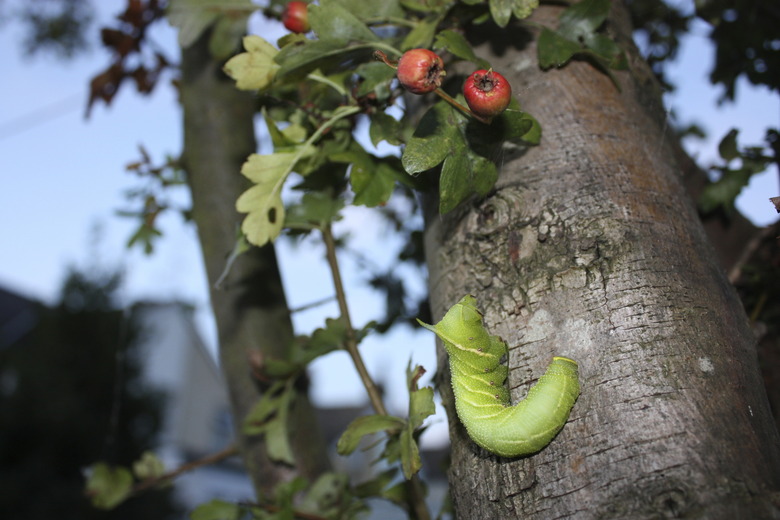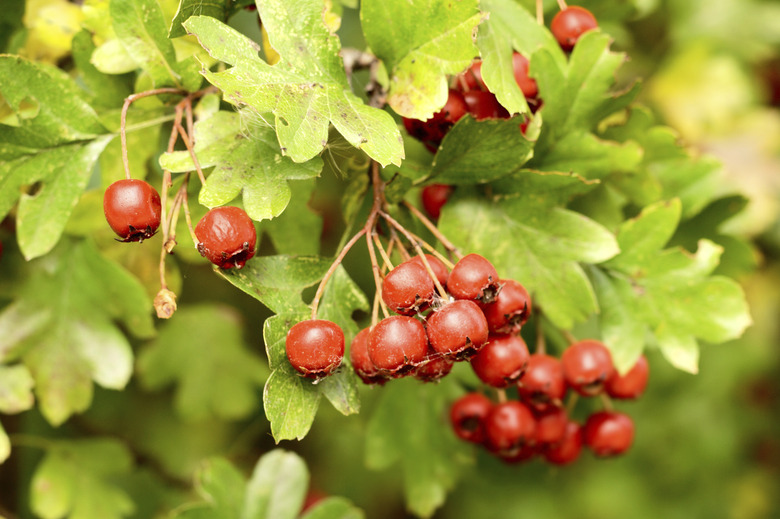Hawthorn Tree Facts
The hawthorn is an species of sturdy tree that is widespread throughout the Western world. Its beautiful flowers, sharp thorns and hedge-like qualities have made it popular throughout the ages. Today, the hawthorn is renowned for its sturdy nature and beauty, but also its functionality as a border hedge. Its berries are also often used in alternative medicine and by herbalists.
History
The hawthorn tree is a native European and Mediterranean tree classified as Cratcegus oxyacantha. Although it originated in Europe and North Africa, the hawthorn is now widespread throughout North America as well. The name "hawthorn" comes from the old-English word "haw," which means "hedge." Combined with "thorn" the name literally means "thorny hedge." In old England these trees were used as a thorny hedge barrier to keep from peasants from entering private land.
Types
The hawthorn changes quickly with the help of hybridization, so there are many varieties, both wild and cultivated. Nearly all of the trees have thorns and flowers, but there is a small handful of varieties that do not possess thorns. The trees also vary in size, typically from 18 to 30 feet in height and 8 to 20 feet in width. There is also a large range in age, with some of the sturdier species living up to 400 years.
Features
All varieties of hawthorn trees possess some type of flower. They can vary in color, but are most often found in shades of white, pink or red. Some of the varieties will have flowers with multiple colors, such as the C. laevigata, which can have bright red flowers with a white center. The leaves on the hawthorn tree also vary. Nearly all of the leaves will feature teeth and thick veins, but size, shape and lobes of the leaves can differ. Typically, berries grow with the leaves and flowers.
Considerations
There are numerous diseases and pests that can strike the hawthorn tree, some of which are common to a variety of trees and some of which are unique to the hawthorn. Leaf spot, leaf rust and stem rust are all fungi that attack the hawthorn's leaves or fruit, causing discoloration and dropping of leaves. Mildews such as fire blight will cause leaves to blacken and drop off, appearing as if they have been burned. Additionally, pests can be a large problem. Varieties of worms, scales, moths and bugs will target hawthorns, procreating in the trees and/or eating different parts of the tree. This will weaken and often fatally harm the tree.
Uses
The flowers, leaves and berries of hawthorn trees have been used for medicinal uses for hundreds of years. Although not necessarily medically proven, the hawthorn berry is considered useful in treating cardiac diseases. The berries are also said to be useful when treating childhood diabetes, high blood pressure, diarrhea and kidney disorders. Herbalists also make use of the leaves, using them as a nicotine substitute for those who are trying to quit smoking and also as a general concoction to promote "well-being." Finally, the flowers of the trees can be used as a safe diuretic when made into tea.
